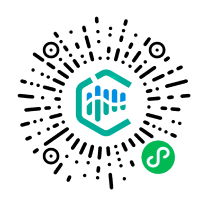

18983288589(微信同号)

18983288589(微信同号)

18908392210(微信同号)

18980413049


2018-10-22
FDA-2018-D-3631
指导原则
美国
现行有效
/
美国食品药品监督管理局(FDA)
GUIDANCE DOCUMENT
Not for implementation. Contains non-binding recommendations.
The purpose of this draft compliance and implementation guidance document is to help covered farms comply with the requirements of the Produce Safety Rule, which establishes science-based minimum standards for the safe growing, harvesting, packing, and holding of produce. Entitled “Standards for the Growing, Harvesting, Packing, and Holding of Produce for Human Consumption,” the rule is part of FDA’s implementation of the FDA Food Safety Modernization Act (FSMA).
The draft guidance provides a broad range of recommendations on how to meet the requirements for most subparts of the rule. It also outlines how to determine whether produce or farms may be eligible for exemptions from certain requirements, or from the rule in its entirety.
Specific regulatory or statutory requirements are cited, and in some cases, specified using the word must. The use of the word should indicates that something is recommended, but not required. The use of the word including means options that are not limited to the described items.
You are encouraged to submit comments on the draft guidance within 180 days of the publish date to ensure your comments are considered while FDA works on the final version of the guidance.
In addition to the draft guidance, there is an At-a-Glance overview of key points in each of the nine chapters described below, as well as a glossary of key terms. The overviews summarize important aspects of each chapter. It is recommended that you review the draft guidance itself for complete information.
This chapter will help you determine if your farm and your produce are subject to the requirements in the Produce Safety Rule. The topics in this chapter will help you understand:
Draft Guidance Chapter 1: General Provisions (Subpart A) (PDF: 1.7MB)
Additional Information:
This chapter will help you evaluate personnel qualifications (such as education, training and experience) and comply with training requirements in the Produce Safety Rule. Topics covered by this chapter include:
Draft Guidance Chapter 2: Personnel Qualifications and Training (Subpart C) (PDF: 1.7MB)
Additional Information:
This chapter provides recommendations on how to use hygienic practices to prevent the contamination of produce and food contact surfaces. Topics covered by this chapter include:
Draft Guidance Chapter 3: Health and Hygiene (Subpart D) (PDF: 1.7MB)
Additional Information:
This chapter will help you implement required practices for reducing the risk of produce contamination from certain soil amendments that consist of materials of animal origin, such as manure or non-fecal animal byproducts, which are added to soil to help plant growth or to improve the capacity of the soil to retain water. Topics covered by this chapter include:
Draft Guidance Chapter 4: Biological Soil Amendments of Animal Origin (Subpart F) (PDF: 1.7MB)
Additional Information:
This chapter will help you determine whether Subpart I applies to you, and if so, what needs to be done to assess relevant areas on your farm for potential contamination and to evaluate significant evidence of potential contamination. Topics covered in this chapter include:
Draft Guidance Chapter 5: Domesticated and Wild Animals (Subpart I) (PDF: 1.7MB)
Additional Information:
This chapter provides recommendations on practices for safe growing, harvesting packing, and holding activities on your farm. Topics covered in this chapter include:
Draft Guidance Chapter 6: Growing, Harvesting, Packing, and Holding Activities (Subpart K) (PDF: 1.7MB)
Additional Information:
This chapter provides recommendations for practices related to equipment, tools, buildings, and sanitation. Topics covered in this chapter include:
Draft Guidance Chapter 7: Equipment, Tools, Buildings, and Sanitation (subpart L) (PDF: 1.7MB)
Additional Information:
This chapter will help you better understand how to create and maintain records required under the Produce Safety Rule. Topics covered by this chapter include:
Draft Guidance Chapter 8: Records (Subpart O) (PDF: 1.7MB)
Additional Information:
This chapter will help you better understand how variances can be used and how to prepare a variance request. Topics covered in this chapter include:
Draft Guidance Chapter 9: Variances (Subpart P) (PDF: 1.7MB)
Additional Information:
You can submit online or written comments on any guidance at any time (see 21 CFR 10.115(g)(5))
If unable to submit comments online, please mail written comments to:
Dockets Management
Food and Drug Administration
5630 Fishers Lane, Rm 1061
Rockville, MD 20852
All written comments should be identified with this document's docket number: FDA-2018-D-3631.

Pharma CMC2024-10-15

摩熵医药(原药融云)2024-08-21
数屿医械2024-06-24
数屿医械2024-06-13
数屿医械2024-05-30
摩熵医药(原药融云)2024-05-27
药事纵横2024-02-28
药通社2023-12-26
摩熵医药(原药融云)2023-12-13
药通社2023-06-25
2024-11-15
2024-11-14
2024-11-01
2024-10-31
2024-10-30
2024-10-30
2024-10-30
2024-10-29
2024-10-28
2024-10-24
2024-10-24
2024-10-23
2024-10-23
2024-10-22
2024-10-21
2024-11-15
2024-11-14
2024-11-01
2024-10-31
2024-10-30
2024-10-24
2024-10-22
2024-10-21
2024-10-17
2024-10-17
2024-10-17
2024-10-17
2024-10-17
2024-10-16
2024-10-15
2024-11-14
2024-11-01
2024-10-31
2024-10-30
2024-10-30
2024-10-24
2024-10-22
2024-10-21
2024-10-17
2024-10-17
2024-10-17
2024-10-17
2024-10-17
2024-10-16
2024-10-15